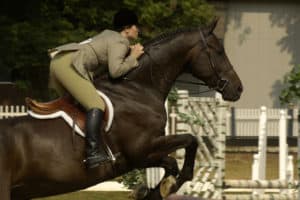2014 ‘Therio Conference’ Held in Portland, Oregon
The specialty conference brought together animal reproduction researchers. Equine topics included biofilms, reproductive biosecurity, embryo biopsies, and more.

The specialty conference brought together animal reproduction researchers. Equine topics included biofilms, reproductive biosecurity, embryo biopsies, and more.

Nancy Diehl, VMD, MS, will join The Horse‘s current behavior expert–certified applied animal behaviorist Sue McDonnell, PhD, Cert. AAB–in fielding audience and reader questions about equine behavior, training, and equitation science.

Up to 90% of horses suffer gastric ulcers. Is your horse one? Discover common clinical signs, treatments, and management strategies for horses with gastric ulcers in our step-by-step guide.

To help you better understand how to tell whether your horse is overweight, too skinny, or just right, we’ve compiled five body condition scoring resources available for free on TheHorse.com.

Greg Best describes “the perfect leg position” and the role of a rider’s knees as pivot points while jumping.

The toxins that cause this potentially fatal neurologic disease could be lurking in your horse’s environment or hay. Learn how to recognize and prevent botulism with this visual guide.

Horses incubating pathogens can develop and shed disease at a show, so monitor your horse’s vitals often.

Nicole Carroll, who trains and teaches out of Leap of Faith Farms in Walnut Creek, Calif., explains how to space cavallettis for training purposes.

If your horse starts exhibiting signs of infectious disease, assume whatever he’s come down with is contagious to other horses until proven otherwise, and follow these important steps to halt disease spread.

Equine surgeon Dr. Sarah le Jeune of the University of California, Davis, shares what every horse owner needs to know about colic.

The USDA could not monitor our nation’s horses for emerging or foreign animal diseases or fulfill the regulatory requirements for interstate and international movement of horses without these accredited equine practitioners’ help.

The navicular is a tiny bone that can cause big problems in horses. It and its associated structures are responsible for up to one-third of all front-limb lamenesses.

Learn about the standing MRI process step-by-step and take a look inside the equine foot.

Provide event organizers with current owner/agent contact information, including cell phone and email, and accurate horse stabling and movement records so they can contact you in the event of a disease outbreak.

To celebrate National Photo Month, we asked our fans to submit their photos of horses in motion during the last week of May. Here are a few of their action photos.

Horse grooming tools come in an assortment of styles and types, with each designed for specific tasks. Selecting the right tools for your grooming kit will depend on both your and your horse’s preferences.
Stay on top of the most recent Horse Health news with